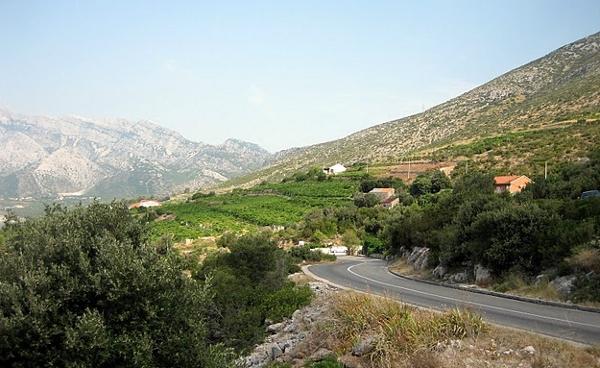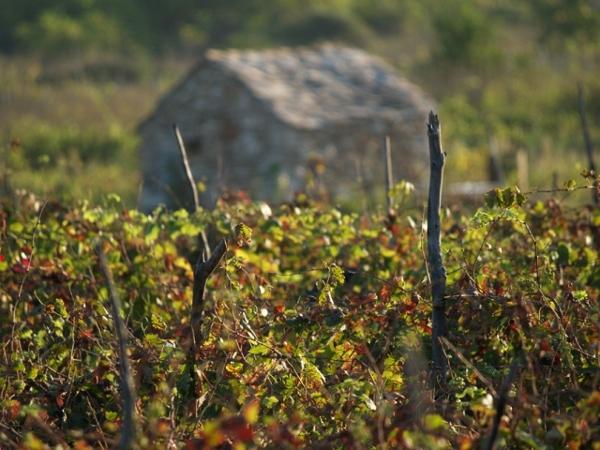Croatian Wine on the Rise
As this Old World wine-producing area comes together as a young nation, the quality of its wines is rapidly improving.
Croatia’s winemaking history began around 2200 B.C., when Illyrian tribes made wine in the area now known as Dalmatia. Greek colonization in 390 B.C. helped spread the craft, while the introduction of Christianity under the Roman Empire in the 4th century A.D. firmly rooted production for sacramental purposes. If asked to name the countries that made up the former Yugoslavia, most Americans would be hard-pressed to answer. But if they could, Croatia would likely top the list.
With 1,118 miles of stunning coastline, more than 1,000 islands and regular visits from cruise ships to the pristine walled city of Dubrovnik, Croatia is an increasingly well-known travel destination for adventurers with a love of history, culture and dramatic scenery.

Croatian wine is on the Rise
Winemaking flourished in Croatia for centuries. However, it was curtailed by myriad events—Ottoman invasions, phylloxera, world wars, the rise of communism and, most recently, conflicts between former Yugoslav republics.
To aid the resurgence of winemaking after all of this adversity, the Association of Winegrowers and Winemakers of Istria (Vinistra) was created in 1995. In 2010, the Croatian Chamber of Economy established the Association of Croatian Wineries.
For years, Croatian wine production was simply divided into two designations, Coastal and Continental.
However, in 2012, a group of Croatian winemakers, sommeliers and wine experts created a new system that highlights four regions: Dalmatia, Istria & Kvarner, the Uplands, and Slavonia & Danube. These have been divided into 12 subregions, with 66 appellations.
The warm, sunny climate is ideal for the cultivation of rich and fruity white Croatian wines
Croatia boasts 64 indigenous grape varieties, resulting in a wide range of wine styles. Wine is also made from “international” varieties like Cabernet Sauvignon, Merlot, Syrah, and Chardonnay.
Despite Croatia’s relatively modest size, it boasts 17,000 registered vine growers with vineyards totaling over 59,000 acres, growing grapes for over 800 wineries. White wines account for 60 percent of production.

Croatian Wine demand is on the Rise
Dalmatia Wine
The southernmost wine region in Croatia, Dalmatia is bordered to the west by the Adriatic Sea, the east by Bosnia and Herzegovina, and the south by Montenegro. It encompasses the towns of Dubrovnik, Split, Sibenik and Zadar.
The warm, sunny climate is ideal for the cultivation of rich and fruity white Croatian wine made from Pošip, Debit and Maraština grapes. Red wine varieties include Babić and Plavac Mali. Some of the most important appellations are the Pelješac peninsula and the subregions of Dingač and Postup.
Notable producers include Grgić Vina Winery, owned by Dalmatian-born winemaker Mike Grgich. After immigrating to California, Grgich rose to stardom in 1976 when his Chateau Montelena Chardonnay won first prize at the “Judgment of Paris.”
Americans Lee & Penny Anderson founded Korta Katarina Winery after visiting war-ravaged Dalmatia to help rebuild schools and infrastructure. The winery is named for their daughter Katharine and the Croatian word for garden.
Ernest Tolj founded Saints Hills Winery in 2006 and enlisted consultant Michel Rolland to make wine from Croatian and European grape varieties in an international style.
Suha Punta and Pilizota are known for their Croatian wine made from red Babić grapes, and Bibich is known for producing excellent wines from European varieties. Zlatan, on the island of Hvar, makes crisp, clean whites and full-bodied Plavac Mali reds.
Read the entire article here: Wine Enthusiast
Get your guide with Tour Dalmatia! Are you ready to explore the wonders of Dalmatia and the coast of Croatia? Get in touch with us to start planning your dream vacation. From Istria, to Zadar, Šibenik, Split, and Dubrovnik: contact us to explore the diverse offerings of the Dalmatian coast of Croatia.






